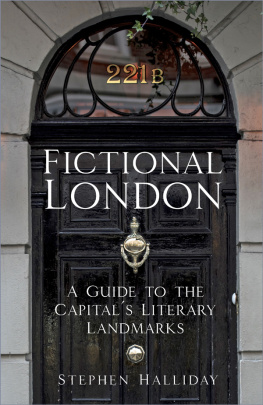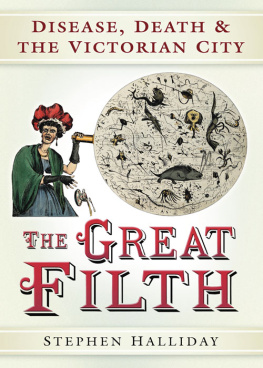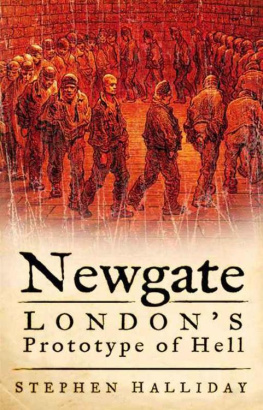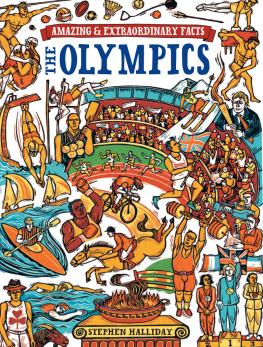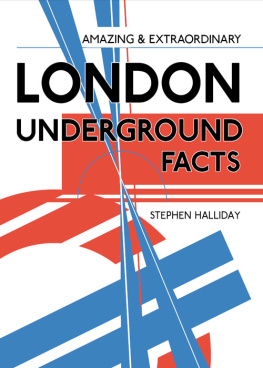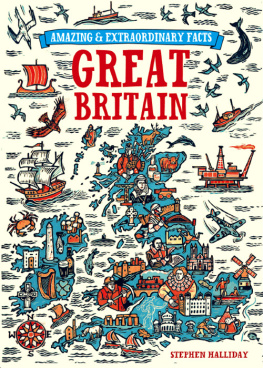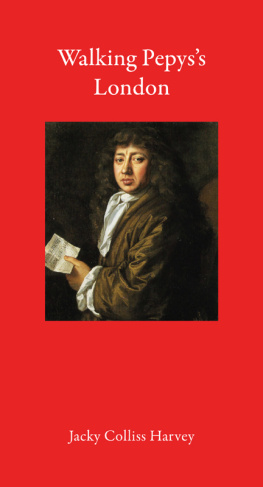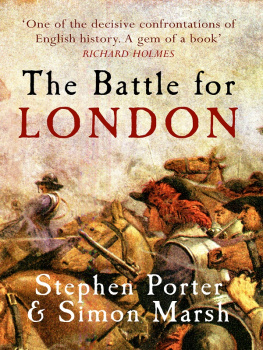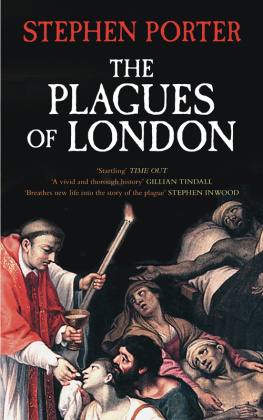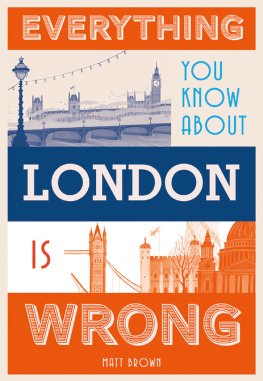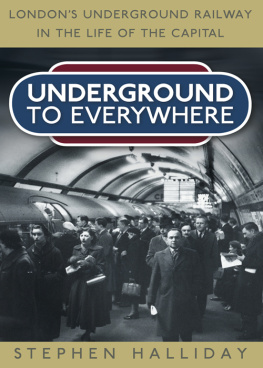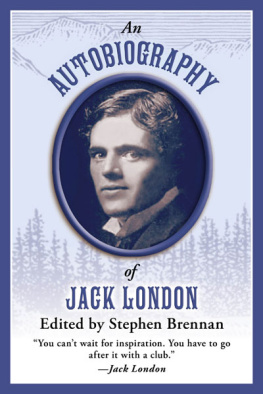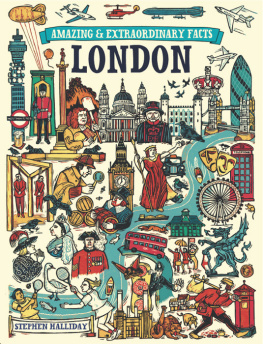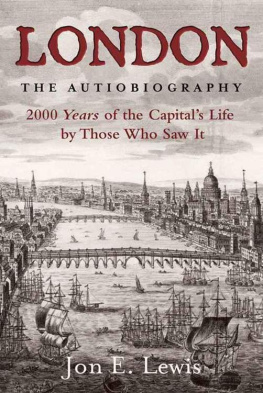Contents
Guide


First published 2013 as From 221B Baker Street to the Old Curiosity Shop
This edition published 2020
The History Press
97 St Georges Place, Cheltenham,
Gloucestershire, GL50 3QB
www.thehistorypress.co.uk
Stephen Halliday, 2013, 2020
The right of Stephen Halliday to be identified as the Author
of this work has been asserted in accordance with the
Copyright, Designs and Patents Act 1988.
All rights reserved. No part of this book may be reprinted
or reproduced or utilised in any form or by any electronic,
mechanical or other means, now known or hereafter invented,
including photocopying and recording, or in any information
storage or retrieval system, without the permission in writing
from the Publishers.
British Library Cataloguing in Publication Data.
A catalogue record for this book is available from the British Library.
ISBN 978 0 7524 9252 0
Typesetting and origination by The History Press
Printed and bound in Great Britain by TJ International Ltd.
eBook converted by Geethik Technologies

CONTENTS
INTRODUCTION
L ondons place in literature is unrivalled. From Chaucers pilgrims gathering at the Tabard Inn, Southwark to the Hogwarts Express departing from Platform 9 at Kings Cross, it has proved endlessly tempting to novelists, poets and others whose imaginations have woven the great city into their stories; its streets, parks, squares, buildings and, of course, its river have featured in more works than it is possible to mention. Even its weather has appeared in some works where Londons sinister smog (dense fog impregnated with smoke) has appeared not just as an element of the tale, but almost as a character in its own right. It would be possible to devote a whole volume to Londons place in the books of a number of individual writers who have used London as a backdrop to many of their works. Charles Dickens and Arthur Conan Doyle come into this category and their characters are to be found in many different parts of London, not least because they often make quite long journeys; Sherlock Homes and Dr Watson travelling by carriage while Dickenss characters are often obliged to make the journey on foot. According to his friend and first biographer, John Forster, Dickens loved walking around London and became a familiar figure to passers-by. In Forsters words:
To be taken out for a walk in the real town, especially if it were anywhere about Covent Garden or the Strand, perfectly entranced him with pleasure. But most of all he had a profound attraction of repulsion to St Giless. If he could only induce whomsoever took him out to take him through Seven Dials he was supremely happy.
Seven Dials, the seven-way junction at the top of St Martins Lane, was once in the centre of Londons most infamous slum tenements. It can still be visited and is now in the heart of Londons entertainment district where visitors and theatregoers walk without anxiety, unaware of its fearful history.
Dickens walked almost every day, sometimes as much as 20 miles at a time. This habit, and his consequent familiarity with Londons streets, no doubt accounts for the detail with which Dickens describes the journeys of characters like Oliver, as he is led to Fagin by the Artful Dodger, and Bill Sikes as he flees to Hampstead after killing Nancy. Both of these episodes, from Oliver Twist, are described in the pages that follow.
George Augustus Sala, an occasional walking companion of Dickens, noted how widely he was known:
The omnibus conductors knew him, the street boys knew him Elsewhere he would make his appearance in the oddest places and in the most inclement weather: in Ratcliff Highway, on Haverstock Hill, on Camberwell Green, in Grays Inn Road, in the Wandsworth Road, at Hammersmith Broadway, in Norton Folgate and at Kensal New Town.
Henry James, born an American whose literary style was very different from that of Dickens, saw the capital of his adopted nation in less sentimental, but perhaps more flattering, terms:
London is on the whole the most possible form of life. I take it as an artist and a bachelor; as one who has the passion of observation and whose business is the study of human life. It is the biggest aggregation of human life the most complete compendium of the world.
Virginia Woolf, herself a resident of Bloomsbury, puts into words the pleasures of walking in London through her character Mrs Dalloway: I love walking in London. Really it is better than walking in the country.
Anthony Trollope also places many scenes in the capital, especially in the Palliser novels where much of the action occurs in Parliament or in the Inns of Court. One of his most chilling passages occurs in The Prime Minister, when the crooked financier Ferdinand Lopez makes his final, despairing walk. Lopez has failed in a series of dishonest deals and further failed to extract money from the family of his unfortunate wife whom he married contrary to the wishes of her parents:
[Lopez] went round by Trafalgar Square and along the Strand and up some dirty streets by the small theatres and so on to Holborn and by Bloomsbury Square up to Tottenham Court Road, then through some unused street into Portland Place, along the Marylebone Road and back to Manchester Square by Baker Street.
It is still possible to follow Lopezs route, after which he buys the single ticket to Tenways Junction and commits suicide by throwing himself in front of a train.

This book is arranged by districts based on Londons boroughs so that, for the most part, readers can follow their interests on foot. This works well in areas which are rich in literary associations such as Westminster, Mayfair, the City of London and Bloomsbury, but is more difficult in outlying areas like Blackheath and Highgate, where a bicycle or public transport will be required for all but the most resolute pedestrians.
Some authors, such as Evelyn Waugh (190366) and P.G. Wodehouse (18811975), mostly confined their characters to a relatively small area and in such cases the main entry in the area concerned may include a few references to other areas which occasionally feature in the writers works. Other writers, like Dickens, crop up everywhere. Dickens and his family lived in innumerable addresses in London and he made use of many of them in his novels as homes, workplaces or points of departure for his characters, while some of his most memorable scenes were placed just beyond the capital. In one case the author has allowed himself some licence to stray over the border into Kent for a particularly striking episode from Dickens.
The Inns of Court (Lincolns Inn, Grays Inn and The Middle and Inner Temple) have been given their own separate entry because their long and rich history has endowed them with many literary associations. Although they are in two London Boroughs, Camden and the City, they are close enough to one another to be explored on foot with minimum use of public transport. There are also separate entries for the River Thames and London Fog, with which we will begin.

